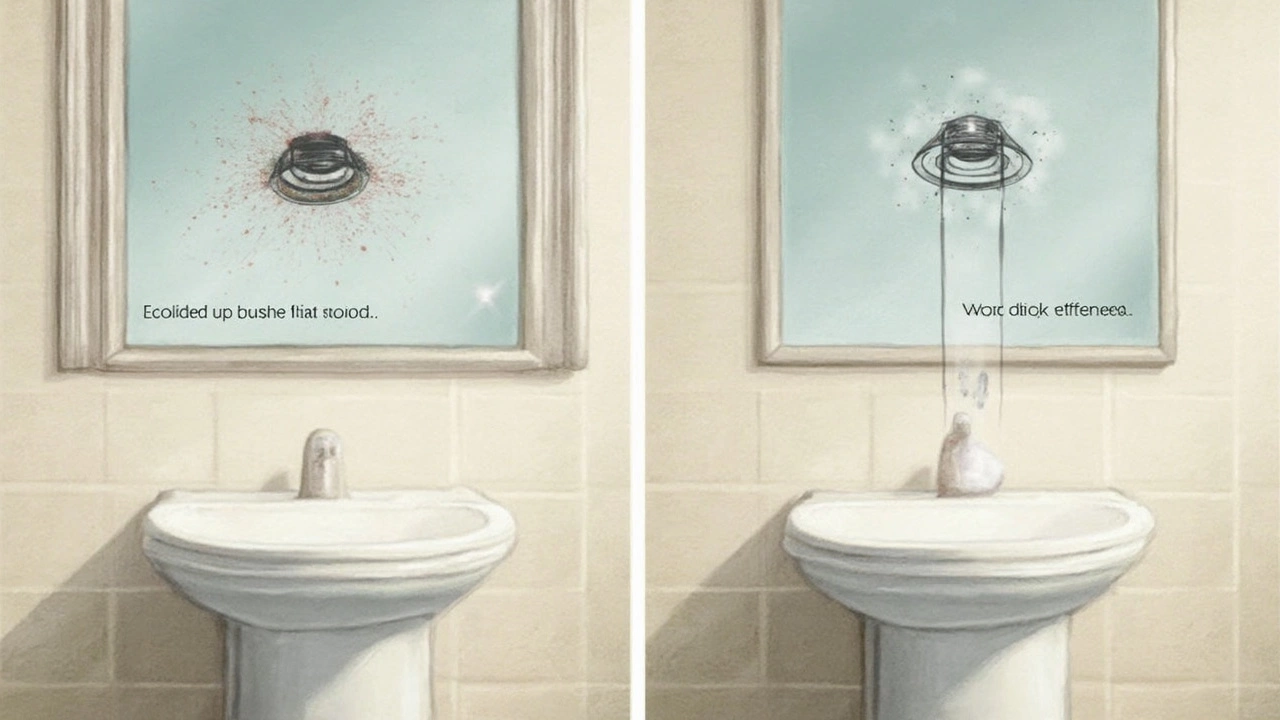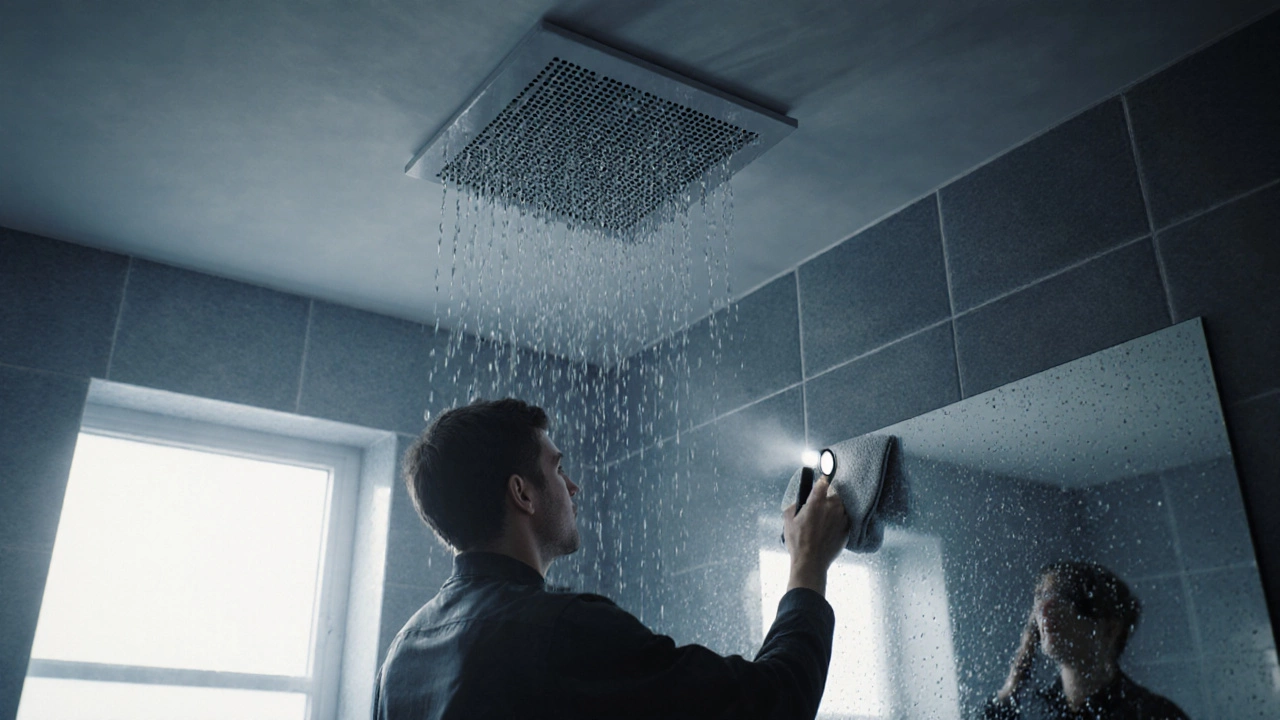
- 7 May 2025
- Gideon Thornton
- 0
Extractor fans seem like straightforward gadgets—switch them on, and they whisk away steam, smoke, and smells. But these little workhorses don’t run forever, no matter how tough they seem. On average, most extractor fans last anywhere from 5 to 10 years, depending a lot on where you use them and how much care they get.
The trick to squeezing every bit of life out of an extractor fan? Knowing what makes them tick and spotting the little problems before they snowball into bigger ones. If you’ve ever dealt with a fan that rattles, struggles to move air, or just gives up, you know it can be a real pain—especially in a steamy bathroom or a sizzling kitchen.
Don’t wait for your fan to suddenly quit on you. With a few simple maintenance steps and some smart know-how, you can push that lifespan closer to the 10-year mark instead of seeing it die young. Keep reading for straight talk on what really makes a difference for your fan’s longevity, hassle-free ways to spot trouble early, and when it’s worth calling in the pros.
- The Typical Lifespan of Extractor Fans
- Why Extractor Fans Fail Early
- Signs Your Fan Needs Repair or Replacement
- Simple Maintenance Tips That Really Work
- When It’s Time to Call a Pro
The Typical Lifespan of Extractor Fans
If you’re wondering how many years you’ll really get out of your extractor fan, it's usually between 5 and 10 years for most models you’ll find in kitchens, bathrooms, and utility rooms. Some will keep humming along for longer, but that’s often the exception—especially if you’re not big on cleaning or live in a busy home.
Let’s get specific: bathroom extractor fans generally last a bit longer compared to the ones in kitchens. Kitchen fans are exposed to thick grease, sticky residue, and all sorts of cooking fumes that build up fast. That grime clogs up parts and makes the motor work overtime, shaving years off the fan’s lifespan.
Quality matters too. You’ll usually get more years out of a fan from a trusted brand—even more if it’s a newer, energy-efficient model. Cheap fans don’t just sound rattly and weak; they’re more likely to fail sooner. Higher-end fans often run quieter and come with better warranties, and their motors can handle more cycles.
| Fan Type | Average Lifespan (years) | Common Reasons for Failure |
|---|---|---|
| Bathroom Extractor Fan | 8-10 | Dust buildup, motor wear |
| Kitchen Extractor Fan | 5-8 | Grease, clogged filters, heavy use |
You might notice that fans in a busy family kitchen die out before a fan that’s running in a seldom-used guest bathroom. How often the fan is switched on and for how long really matters. Fan motors have a finite number of cycles before wear and tear catch up.
If you want the longest lifespan from your extractor fan, keep an eye on how it’s running and try to stay on top of simple maintenance—like cleaning the grille and checking for dust or grease. Using the fan only when you really need it helps, too. That way, you’re not putting miles on the motor for no good reason.
Why Extractor Fans Fail Early
Extractor fans quit earlier than they should for a bunch of reasons—most of which boil down to how often they’re used and how well they’re looked after. One of the main reasons is dust and grime buildup. When grease or fluff coats the blades and inside parts, it makes the fan work harder, overheat, and eventually burn out.
Another big killer? Moisture and humidity. In bathrooms especially, steam can seep into the fan’s motor or short its wires. Fans made for dry areas won’t cope well in a bathroom or kitchen full of steam, so it matters where you put which model.
- Poor Installation: If a fan gets installed wrong (like loose wiring, poor sealing, or improper venting), it can fail years before its time. Even a fancy model can't fight bad setup.
- Cheap Parts: Low-cost extractor fans often cut corners on motor quality and wiring. They’ll spin for a while, but not long-term.
- Neglected Maintenance: Most fans only get attention when they get noisy. Skipping regular cleaning or letting debris build up shaves years off the fan’s lifespan.
- Power Surges: Little electrical spikes from dodgy wiring or sudden outages can fry delicate fan components, especially on cheaper models.
| Factor | Effect on Lifespan |
|---|---|
| Dust Build-Up | Cuts motor life by up to 40% |
| Poor Installation | Makes replacement likely within 3-5 years |
| High Humidity | Corrodes contacts; speeds up failure |
If your extractor fan is having a rough time with any of these, don’t be surprised if it sputters out way before the expected 10 years. Spotting these problems early is half the battle if you want your fan to last.

Signs Your Fan Needs Repair or Replacement
Most folks don’t realize their extractor fan is in trouble until it acts up in obvious ways. Spotting problems sooner can save you money, headaches, and a lot of steamy air. Here are the top warning signs your fan is on the way out or just needs a bit of TLC.
- Unusual Noises: A healthy extractor fan hums quietly. If yours starts buzzing, clattering, grinding, or making any weird sounds, that’s usually a motor or loose bearings crying for help. Left unchecked, this can fry the motor fast.
- Poor Airflow: If the fan isn’t clearing fog or smoke like it used to, that’s a red flag. You might even feel weak airflow or nothing coming out at all. Dirty filters, worn-out motors, or clogged vents are the usual suspects.
- Strange Smells: If you get a burning or electrical smell, shut the fan off right away. Smells like that usually point to electrical faults or a motor that’s struggling, both of which are fire risks.
- Doesn't Turn On or Off: If the fan ignores the switch or randomly stops, there’s likely a wiring issue or the motor’s given up. Sometimes it’s a stuck switch, but often it means bigger trouble is brewing.
- Visible Dust or Grease: If the cover or blades are packed with grime and still don’t work right after cleaning, something inside might be jammed or simply worn out from too much gunk buildup.
Here's a quick look at what these red flags really mean for your extractor fan:
| Sign | Possible Cause | What to Do Next |
|---|---|---|
| Noisy Operation | Worn bearings, debris, unbalanced blades | Check for loose screws, clean blades, call a pro if noise stays |
| Weak Airflow | Clogged vent, dirty filters, tired motor | Clean filter/vent, replace motor if needed |
| Electrical Smell | Overheating motor, wiring faults | Turn off, don’t use, get an electrician |
| Won’t Start | Wiring, blown fuse, failed switch | Test switch, check fuse, call a pro |
Ignoring early warning signs with an extractor fan never ends well. Fixing small issues right away is always cheaper and safer than waiting until it completely fails—unless you fancy showering in a sauna or cooking with smoke. If you’re not sure, ask a pro before things get worse.
Simple Maintenance Tips That Really Work
Keeping your extractor fan in good shape isn’t rocket science, but it does take a bit of regular effort. Most fans die young because they clog up with dust, grease, or are just ignored until they finally struggle and quit. Here’s how to keep yours humming for years.
- Clean the grill regularly: Dust and grime love to collect on the fan grill. Just pop it off (most snap on or have simple screws), give it a wash in warm soapy water, and dry it well before clicking it back into place. Aim to do this every month if your fan gets daily use.
- Don’t forget the blades: The blades get gummed up with sticky residue, especially in the kitchen. Wipe them with a damp cloth and a bit of mild detergent. Be gentle—bent blades don’t move air right and can burn out the motor.
- Vacuum the vent duct: If you can access it, use the narrow nozzle on your vacuum to suck out dust and cobwebs from the duct. This helps keep airflow strong and cuts down on weird smells that can back up into your room.
- Check for odd sounds: Rattles, squeaks, or grinding noises mean trouble. It’s often just a loose screw, but sometimes it’s a sign of worn-out bearings or a dying motor. Catching this early saves you hassle and money down the road.
- Run the fan regularly: It might sound odd, but a ventilation fan that never gets used is actually more likely to seize up. Even if you don’t need it daily, let it run for a few minutes every week just to keep everything moving smoothly.
- Replace or wash filters (if your model has them): Some modern extractor fans have filters that trap grease or particles. These need a wash or a swap every few months. Check your fan’s manual—most filters just slide out, get cleaned, and slide right back in.
Just to put things in perspective, a quick survey of repair technicians in 2024 showed that neglected fans are almost twice as likely to fail before 7 years, compared to those that get cleaned every few months. Here’s a simple breakdown:
| Maintenance | Expected Life (Years) |
|---|---|
| Regular cleaning (every 1-2 months) | 8-10 |
| Minimal cleaning (once a year) | 5-7 |
| No maintenance | 3-5 |
Spend 10 minutes every couple of months on these steps, and you’ll save yourself a ton of hassle—not to mention the cost of a brand-new extractor fan.

When It’s Time to Call a Pro
Sometimes, DIY just isn’t enough for your extractor fan. Even the best maintenance won’t fix a fan when certain things go wrong—especially when repairs get too technical, or the risks (like messing with live wires) aren’t worth it. So, when exactly should you stop fiddling and bring in a pro?
- Weird noises just won’t quit: If your fan keeps screeching, rattling, or humming strangely after cleaning and basic checks, it’s often a sign the motor or fan bearings are shot. These aren’t just annoying—they hint the fan could fail at any moment.
- Fan isn’t turning on: Power issues might seem simple, but if the fan doesn't start after you’ve checked your fuse or breaker, you could be dealing with internal wiring—or a burnt motor. Definitely not a safe DIY job for most folks.
- Burning smells or smoke: This is a red flag. Shut the fan off right away. A burning smell usually means the motor or wiring is overheating, and that’s a serious fire hazard. Don’t take chances here; call a licensed tech.
- You spot visible damage to wires or casing: Cracked casings, melted wires, or scorched terminals mean the fan isn’t just worn—it’s dangerous. Let a professional handle it, since exposure here could also mean new rules for repairing or replacing based on building codes.
- It’s been running for over 10 years: Even if the fan still spins, old units might not clear out air effectively or could be energy hogs. A pro can tell if you’d save money by upgrading to a newer, more efficient model.
- Fan isn’t pulling air: If your kitchen or bathroom stays foggy or sweaty even when the fan’s on, but nothing obvious like a blockage is in the way, you probably need more than a filter swap. A repairperson can check the ductwork and make sure you’re not dealing with deeper issues like a failing impeller or collapsed duct.
If you’re worried about costs, don’t forget that regular servicing can usually save you money in the long run. According to a 2023 survey by UK Home Maintenance, homeowners who booked a pro for extractor fan repair every 2-3 years spent 30% less on emergency replacements than those who waited until breakdowns.
Here’s a quick look at common problems and whether you’re likely to fix them on your own or should call a pro:
| Problem | DIY? | Call a Pro? |
|---|---|---|
| Dirty grilles/filter | ✔️ | ❌ |
| Loose screws/noisy cover | ✔️ | ❌ |
| Motor won’t start | ❌ | ✔️ |
| Electrical burning smell | ❌ | ✔️ |
| Fan not clearing air | Possibly | ✔️ |
| Damaged wiring/housing | ❌ | ✔️ |
When in doubt, play it safe—not just for your ventilation but for your home’s safety, too. Professional help isn’t just about fixing what’s broken; it’s about making sure your extractor fan keeps working for as close to that full life expectancy as possible.




